Last Updated on September 7, 2018 by Heather Hart, ACSM EP, CSCS
Oh, here we go.
When you spend upwards of 4 hours a day on most days, for months, training for an event that is not only your “A” race, but a race that’s been on your bucket list for awhile, all of your energy and your entire focus is spent on that race. You focus on becoming stronger, faster, tougher, in order to complete and/or compete in the race. You become so consumed with training that it becomes as important and instinctual as eating, sleeping, and breathing.
But when it’s time to taper (the week or two before the race where you purposefully cut way back on training in order to allow your body to rest and heal) and your workouts are drastically decreased, all of that energy and focus has to go somewhere.
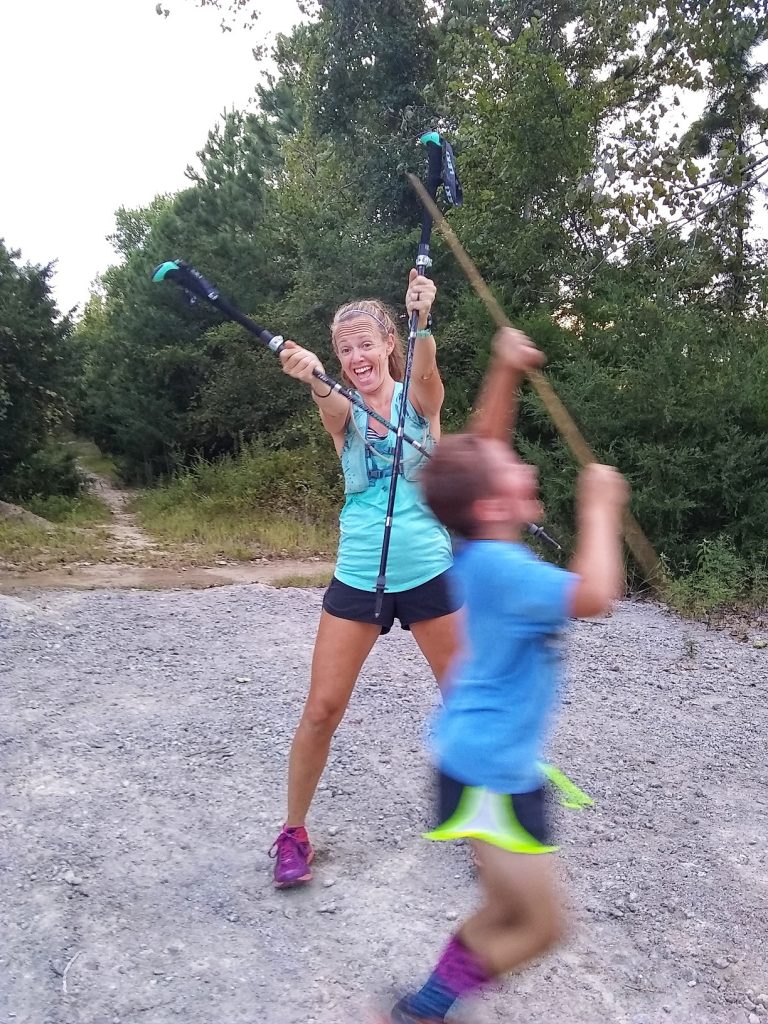
That blur of a kid, he’s full of energy.
I’ve found that energy and focus is most likely going to go into freaking out about every possible aspect of the race that you hadn’t taken the time to think about until now, specifically the details that are completely out of your control. So naturally, that’s what I’ve been up to this week.
The Barkley Fall Classic is a bit of an enigma. A much shorter (but not, by any means, short) version of the “big Barkley”, this will be the race’s 5th year, and boasts something ridiculous like a 30% finishers rate of the few hundred people that show up every year. No GPS watches are allowed. The course changes every year. In short: not a ton of information, other than “holy crap that’s the hardest thing I’ve ever done” comments are floating around the internet. I know little about what is actually in store for me, and that equal parts excites and terrifies me.
(Side note: the comment in the video below “The first rule of Barkley is don’t talk about it. If you talk about it then you’re not going to be a part of it” is exactly why Gary/Laz will probably never let me be a part of it. I can’t not talk about it. Semi professional blogger problems.)
I’ll be the first to admit that these are all relatively irrational, incredibly trivial fears. At the end of the day I recognize not only how lucky I am to have gotten into this race in the first place (the waiting list was apparently out of control), but I realize how incredibly fortunate I am to have this opportunity, period. I realize how lucky I am to have the physical ability to even attempt such a feat. And honestly? I’m really looking forward to the challenge and the experience as a whole.
But that hasn’t stopped the taper madness from causing my brain to flip through all possible worst case scenarios on repeat. So without further ado:
BFC 50K: THE LIST OF THINGS I’M AFRAID OF
1. Wasps
Growing up I had an overwhelming, almost debilitating fear of bees, wasps, yellow jackets, basically anything flying with a stinger and/or willing to bite me. To be honest, I’m not 100 percent sure there was any justifiable reason for this phobia, I don’t recall any negative interaction with any sort of bee. You’d have to ask my mother (hi mom!). Anyway, I clearly remember learning at a very young age what it felt like to be on the verge of an anxiety attack anytime I was holding a popsicle or something sweet at the beach, or found myself standing a bit too close to a garbage can or a picnic table with a handful of swarming insects.
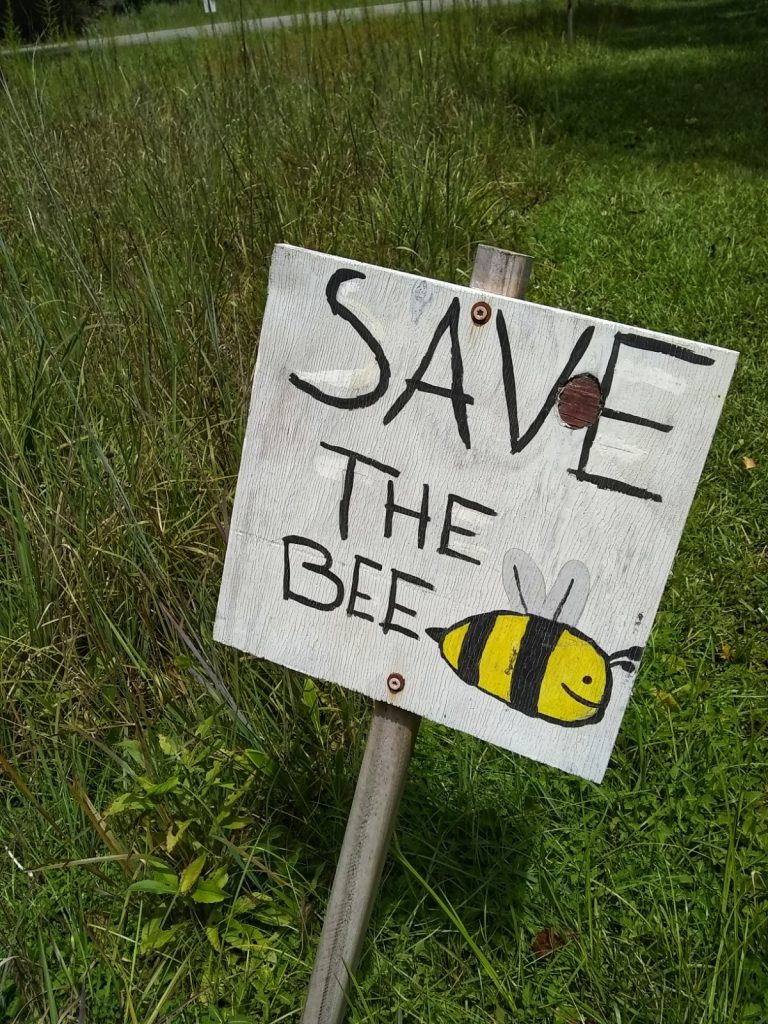
Over the years, the fear dissipated, similar to that of little kids and their fear of getting a shot at the doctor’s office. You realize it a) doesn’t actually hurt that bad, and b) doesn’t happen frequently enough to warrant such stress. Though last summer I did get bit by a wasp on my back, while driving, and nearly drove my family right off the road because it startled me and stung so bad. Lesson learned: don’t drive 70 miles per hour down highway 17 with your arm out the window.
I’ve spent the last few weeks pouring over other people’s Barkley Fall Classic race reports, and two things are mentioned consistently: the climbs, and the wasps. Apparently, without fail, runners agitate these already angry insects, inciting total chaos, screams, and pain. No we aren’t talking a bit or two, some people reported 20+ bites. At once. A few reports include people who had such severe reactions that their heart rates elevated to the point that they feared they wouldn’t be able to continue on. Another had a full blown allergic reaction…for the first time.
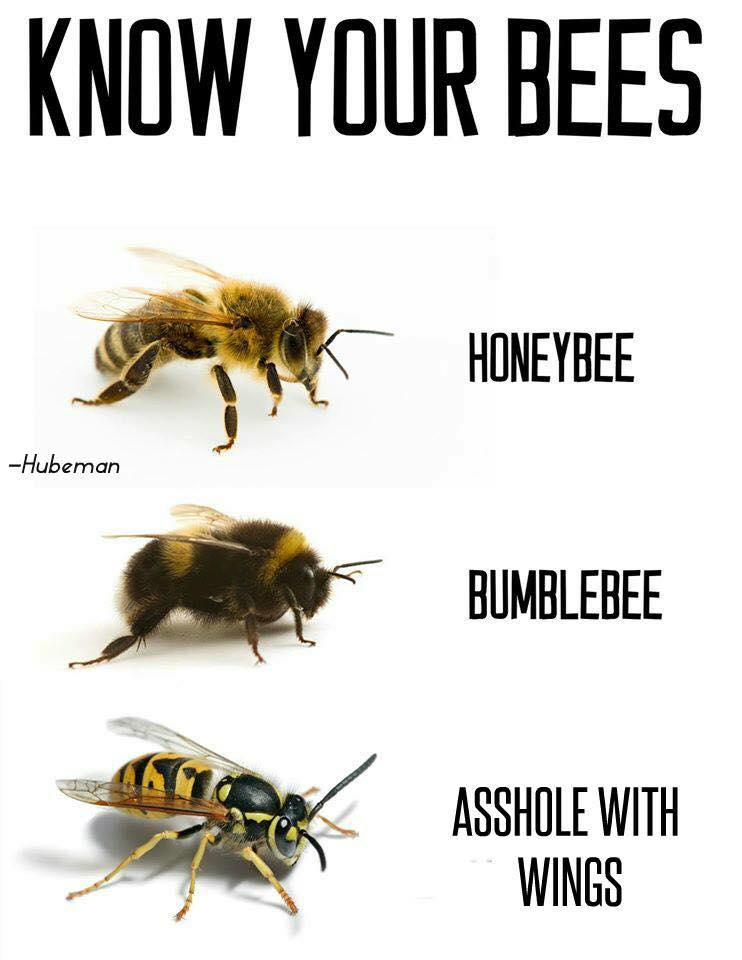
So yeah, I’m a little petrified of those little stinging, biting bastards. Silly fear? Absolutely. But I’m putting it out there.
2. The Conga Lines
Every year the course of the Barkley Fall Classic changes. However, every year people report getting stuck behind long, impassible lines of runners on the single track. I’m terrified that I’m going to get stuck behind one of these lines moving slower than I would like to / need to move in order to beat the time cutoffs (see #5 below). Yet here is the kicker: I fear I’m not strong enough to get out far enough in the beginning to avoid these conga lines all together. Not knowing the course (and you know, training and living here in flat Myrtle Beach) I don’t want to push TOO hard in the beginning and exhaust myself before the race even starts to actually get difficult. Which leads me to my next point: I’m afraid of being the slow person causing a conga line in the first place.
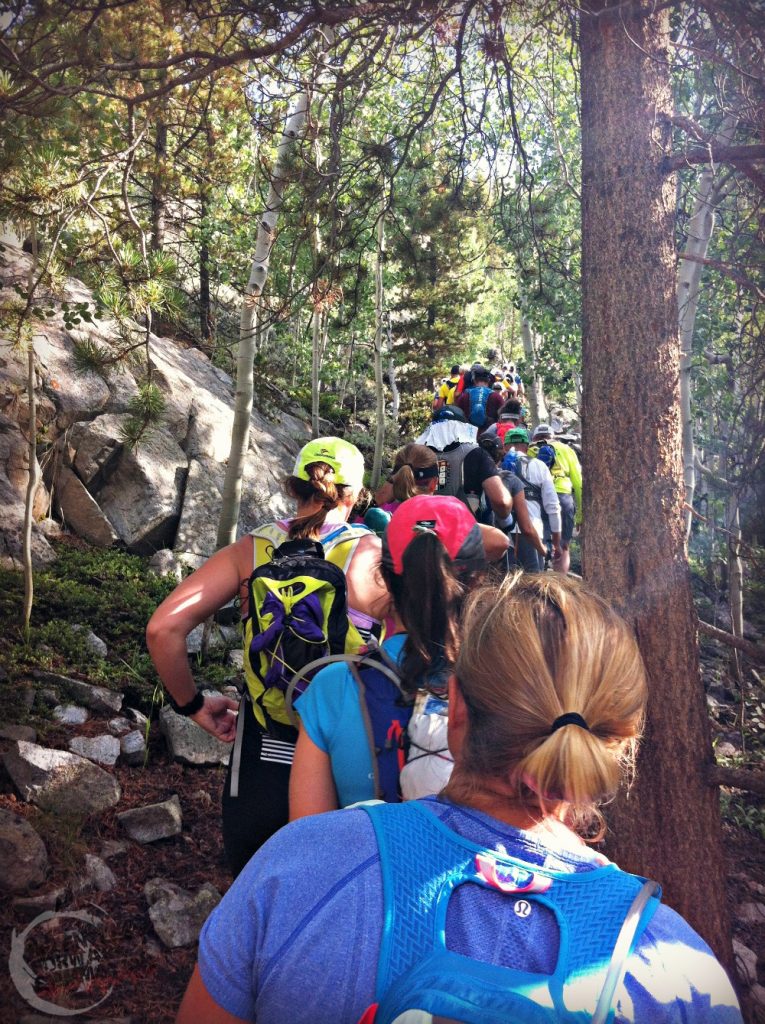
A hellacious “conga line” climbing up to Hope Pass in Leadville, Colorado, that was impossible to get through. I took a trekking pole to the chest more than once from the person in front of me.
3. Getting Lost
Technically, the course IS marked, unlike this race’s big brother, The Barkley Marathons. However, “marked” is relative…and many reports describe people getting woefully lost. We are provided course maps, but let’s face it, the last time I read a map was in 2014 and I got woefully lost then, too. Navigation skills are something I’d like to work on, as I would love to eventually get into Adventure Racing with my better half. We’ll see how much nav knowledge I can nail down in a single week…
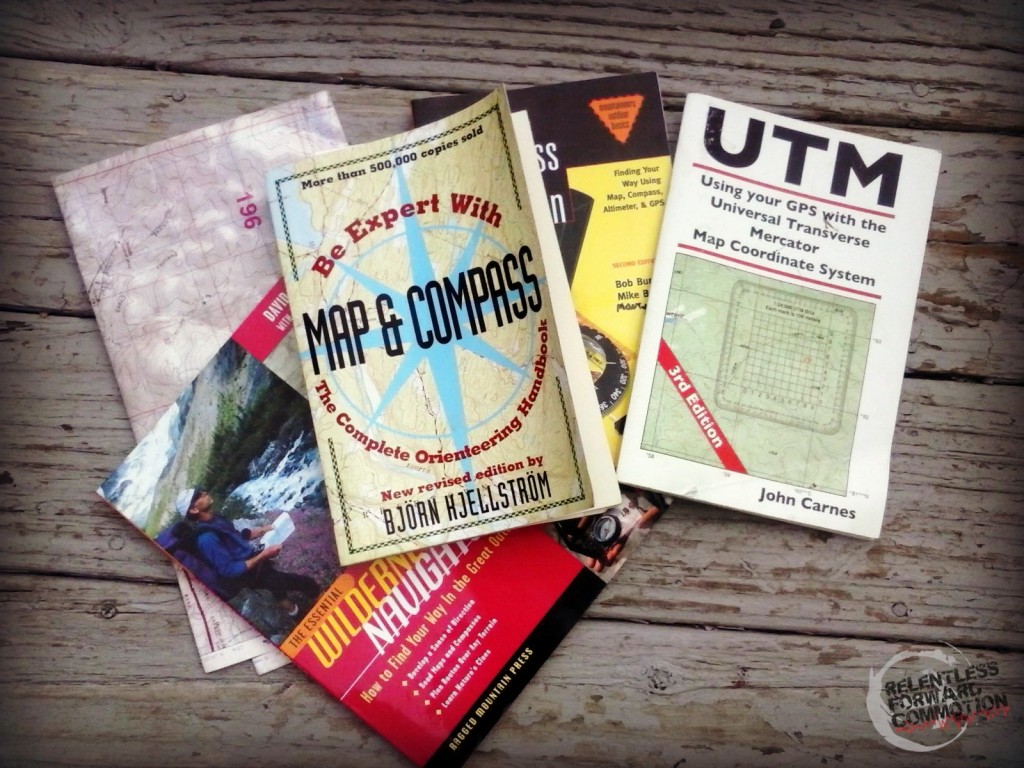
I have not read any of these yet. And this picture is four years old. Oops.
4. Running Out of Water
I rarely run without my hydration pack, and as such, I’ve gotten into the habit of drinking a lot of water. I take a sip whenever the fancy strikes, sometimes even sooner than that. Hydrate or die, right? I’ve been told to prepare for at least 3-4 hours between aid stations. In this summer heat? It takes me about half that time to down my 1.8 liter hydration bladder. So I need to consciously be aware of drinking ENOUGH water to stay hydrated, but not TOO much water, that I run out two hours too soon.
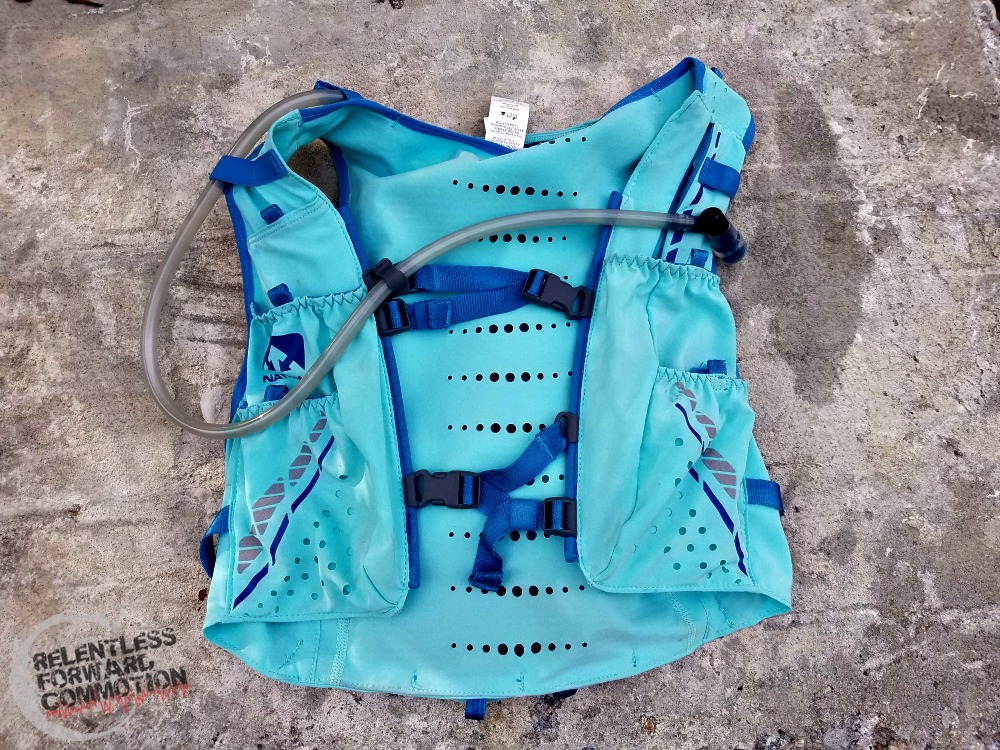
Remember when this was so blue, and so pretty? Now it’s a shade of blue/brown, despite weekly washings. But damnit, this was worth every single penny.
5. Not Making Time Cutoffs
Because let’s face it, like 70% of the field DOESN’T make the time cutoffs. Because they are underprepared, because they underestimated how much time they needed to buy in the beginning, because they get caught up in conga lines (see #2), because no GPS means you have to guess how much further you have to make the next aid station cutoff, because the course is really, really freaking hard.
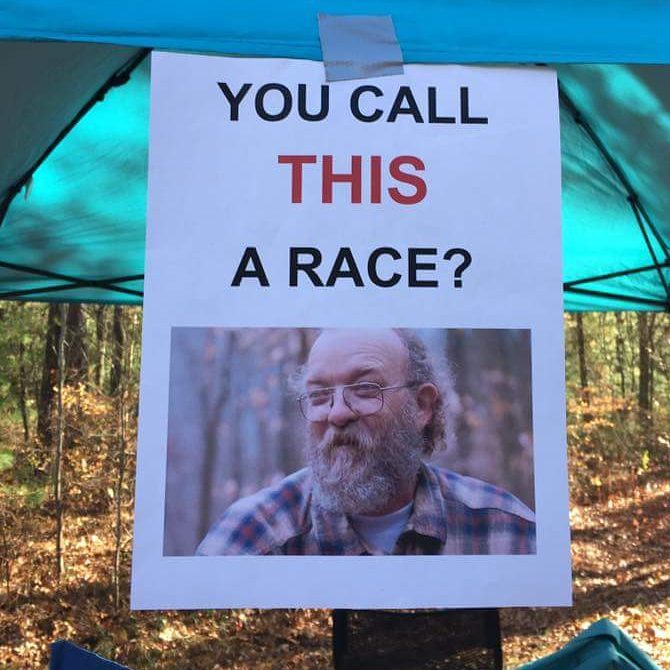
6. Not Being Strong Enough
Some of the most badass athletes I know say this is one of the hardest things they’ve ever done…or attempted. Some of the most badass athletes I know took a DNF on this course. I’m no beginner, but I’m a sea level, still relatively green ultra runner. I can hold my own against some stronger athletes, but this? This is a big one. What is it exactly that broke those seemingly stronger athletes? The climbs? The time cutoffs? The physical strength? The mental strength? Do *I* have what they did not, do I have what it takes to finish this race? Was all of the training I did this spring/summer enough?
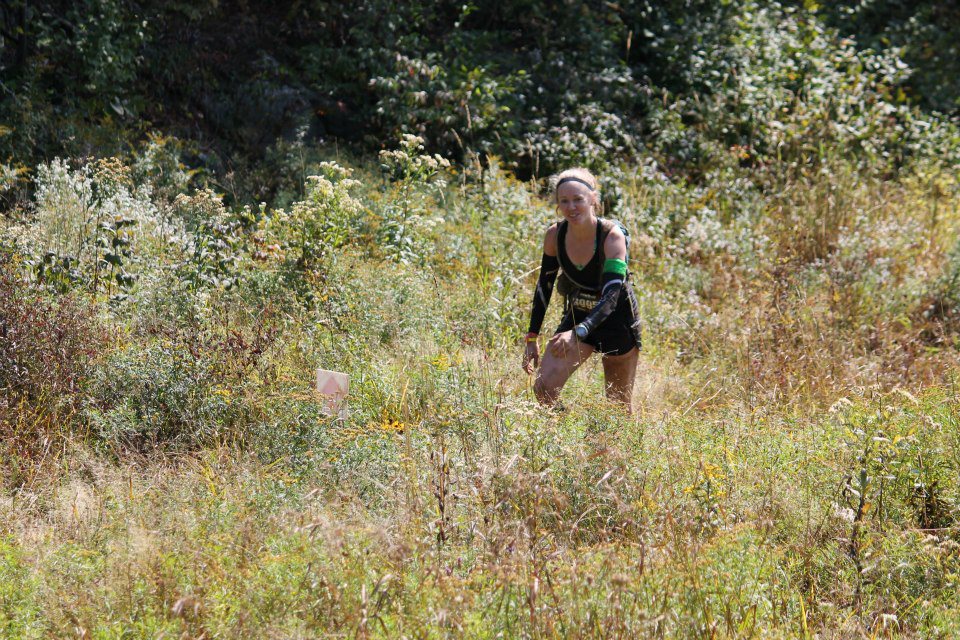
The exact day I discovered that maybe I was cut out for this sort of nonsense. The inaugural (2012) Spartan Ultra Beast. Yet that day, I still wasn’t strong enough.
7. The Potential Rain/Cold
Let’s just put this out there: I don’t mind racing in the rain. I don’t mind racing in the cold. But put the two together and I absolutely fall apart. I cannot maintain a safe, never mind comfortable, body temperature in wet AND cold conditions. Hypothermia and I are, unfortunately, already well acquainted. The cold/wet combo truly is my kryptonite. And while I don’t expect it to be cold AND wet during the BFC, it’s always a possibility. When it comes to weather, anything goes when it’s September in the mountains.

LOOK AT HOW COLD AND WET I AM! (2014 Mogadishu Mile GORUCK event)
BUT WAIT…there’s more.
BFC 50K: THE LIST OF THINGS I’M NOT AFRAID OF:
(again, in no particular order.)
1. Rattlesnakes (or snakes in general)
I’ve never been afraid of snakes. Moving to South Carolina only reinforced that, as our local trail is littered with snakes. Not rattlesnakes, of course, but we have copperheads, water moccasins, rat snakes, king snakes, corn snakes, those cute neon green skinny snakes…there’s a lot of snakes. Respect the snake, give the snake wide berth, and chances are, the snake is going to in turn, leave you alone.
That said, I’ve never seen a rattlesnake in the wild, so here’s hoping they feel the same way about me as I do about them.
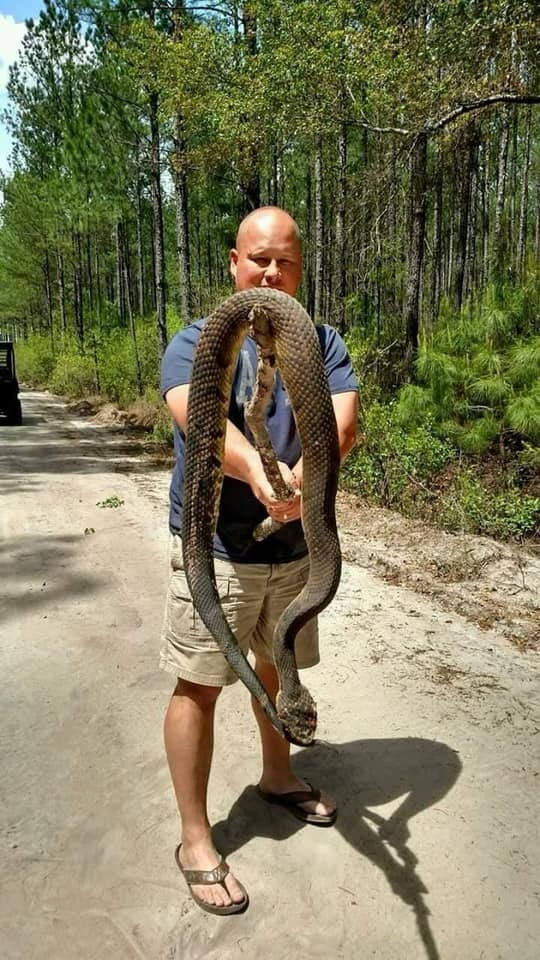
I have no idea who to credit this photo to. It’s floating around Facebook, of a recent snake found in the Francis Marion Forest, where we often run Eagle Endurance races.
2. The Climbs
When I first got into the wonderful world of Obstacle Course Racing, I tackled some of the gnarliest courses that existed at the time, up and down the double black diamond faces of ski mountains in Vermont (sometimes carrying 50 lb sandbags). I ran trail races that prided themselves on having “off trail” climbs…again, up the double black diamond faces of ski mountains. And then there was those mountains and climbs (even the one that made me cry) in the Colorado Rockies. I’ve learned, that no matter how much a climb sucks…it eventually ends. Hell, even Everest has a summit.
You simply have to keep moving forward. Even if it’s only a count of five forward steps before you rest for a few seconds, you do it. Don’t bitch, don’t cry, just keep moving forward. Yes, it’s going to hurt the entire way up that climb, but the more you put your head down and get to work, and the less you contemplate how much your life sucks at that very moment, the faster you reach the top. I’m not afraid of climbs (though I hear I should be with the Barkley Fall Classic course…)
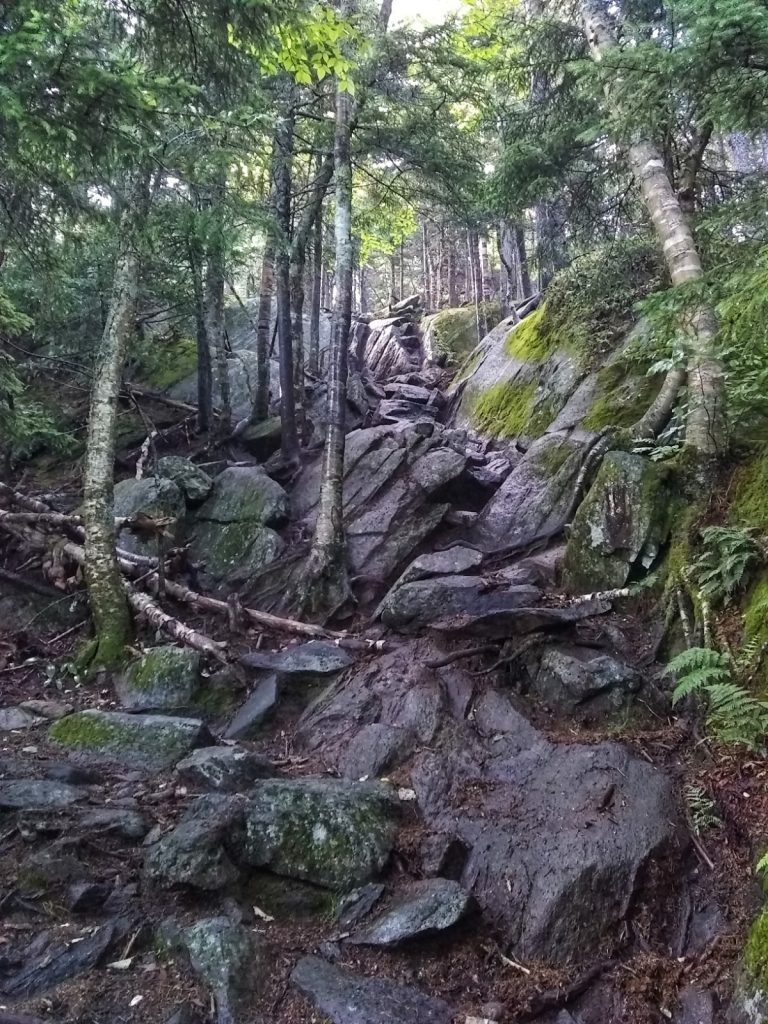
3. The Potential Heat
I train at all hours of the day in Coastal South Carolina. In the summer (now), it is regularly 80-100+ degrees, with a dewpoint / humidity that matches. It sucks. I wouldn’t necessarily say that I excel in these conditions, but more so that I’m used to the suck. I’ve adapted (slightly) to the suck. So I’ve got that going for me.
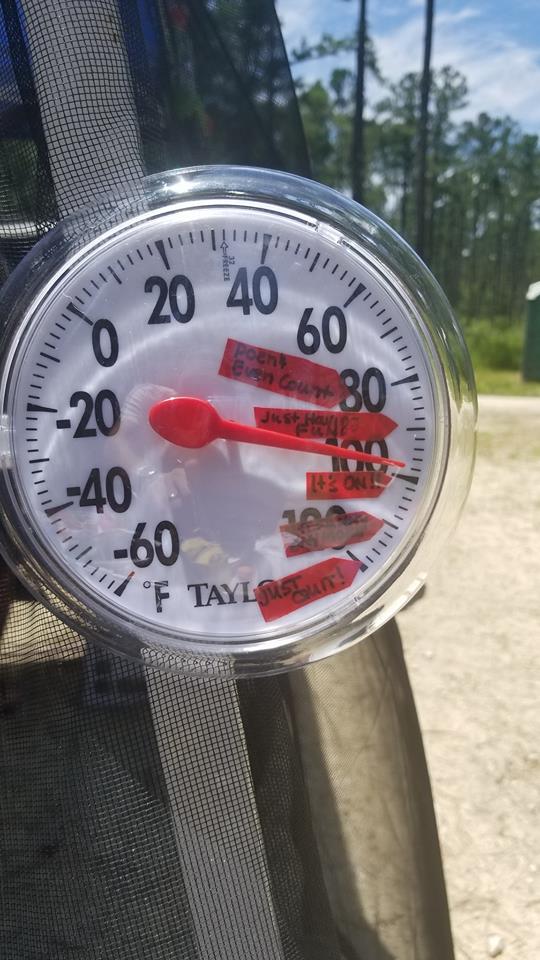
100 degrees for a 100 miler. It only makes sense. (2018 Hell Hole Hundred)
4. The “Shiggy”
In the Hash House Harriers world (on on!), we refer to trails with varying “shiggy” ratings. I.E. how much is mother nature going to try to destroy your legs and inhibit forward movement, on a scale of one to five? Thorns? Check. Ivy and vines that are so tightly intertwined you can barely pass through? Double check. Stinging nettles? Ouch…but check. Not to mention I spent my childhood wandering the forests of Vermont. I know how to duck, weave, and plow right through vegetation and overgrown brush. Yes, gigantic thorns tearing at your quads (or shoulders, if they’re tall enough) hurts, but it is what it is. It hurts less than wasp bites, that’s for sure.
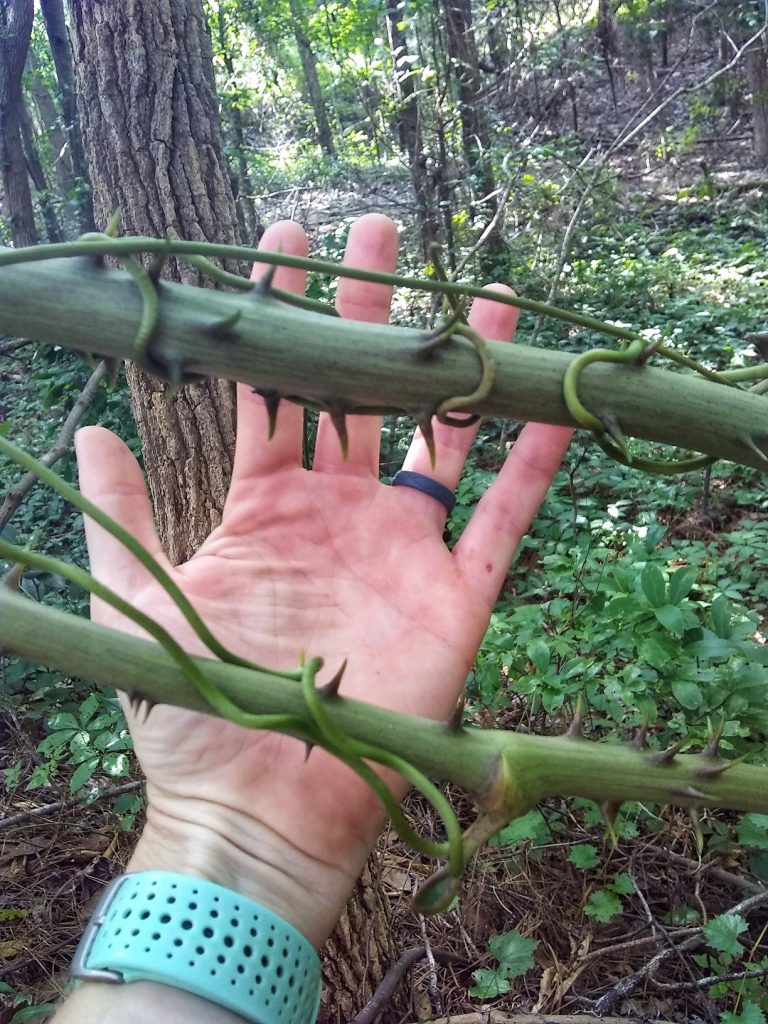
5. The Distance
I know it’s all relative. But I also know I can cover 31 (or 42 as it may be) miles. I know I can push hard for 13 hours and 20 minutes (or less. Hopefully a little less).
6. No GPS/Music
As you may or may not know, GPS watches are explicitly NOT allowed at the Barkley Fall Classic (or the Barkley Marathons). It’s a little disconcerting not knowing how far you’ve gone, nor how far you have left to go (such 21st century runner problems). However, this will not the first time I’ve run or raced without a GPS though. Between 2015 and 2017 I took a nice long break from using a GPS, because I simply didn’t want to deal with data. I ran all 6 days /120 miles of the TransRockies Run stage race without a GPS (and the course wasn’t marked with mile markers).
For the Barkley Fall Classic, I know there is a starting point, there is a finish point, and there will be a certain number of aid stations at approximate mileage throughout. That will have to be good enough.
Music? I can take it or leave it. I love being on trails, so I plan to (figuratively, hopefully not literally) get lost in the sights and sounds of Frozen Head State Park. (You know, the sounds of rattlesnakes and wasps…)
7. The Hurt
We’ve all got a reason to hurt. It’s why we do this in the first place, right?
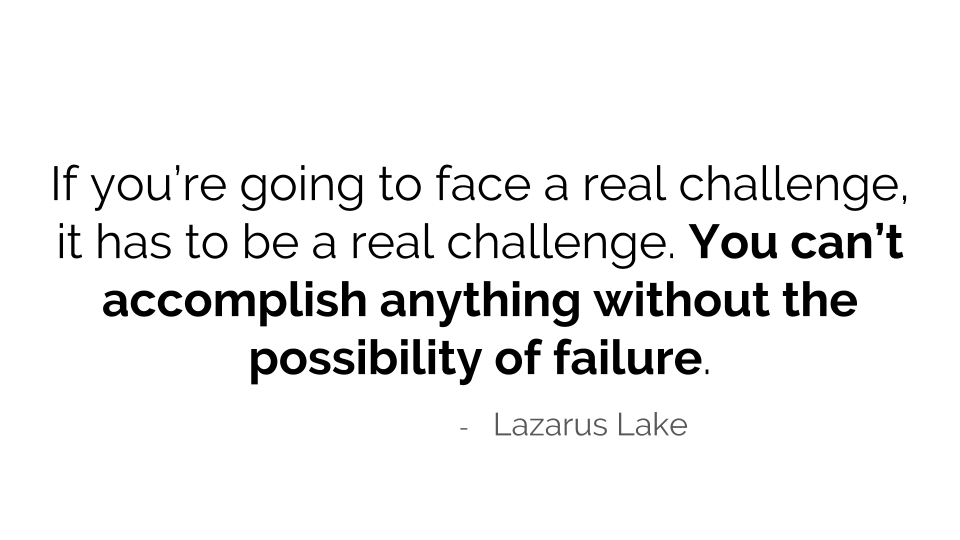
8 more days.
Heather Hart is an ACSM certified Exercise Physiologist, NSCA Certified Strength and Conditioning Specialist (CSCS), UESCA certified Ultrarunning Coach, RRCA certified Running Coach, co-founder of Hart Strength and Endurance Coaching, and creator of this site, Relentless Forward Commotion. She is a mom of two teen boys, and has been running and racing distances of 5K to 100+ miles for over a decade. Heather has been writing and encouraging others to find a love for fitness and movement since 2009.

Organic Runner Mom
You’ve got this Heather!!! You will get through those conga lines and stay away from the wasps!!! Go for it!
Virjinia
This is definitely a cool event and I totally think you’ve got this! You’re a strong runner and this will be a great experience for you. Good luck!
Kimberly Hatting
WOW!!!!! This sounds so exciting! I remember reading about this race recently in Runner’s World, so it’s exciting to “know” someone tackling it 😉 I agree with you…I can handle cold and I can handle wet…but marry the two and I become a chronic complainer with a nasty attitude. BEST of LUCK!!!!